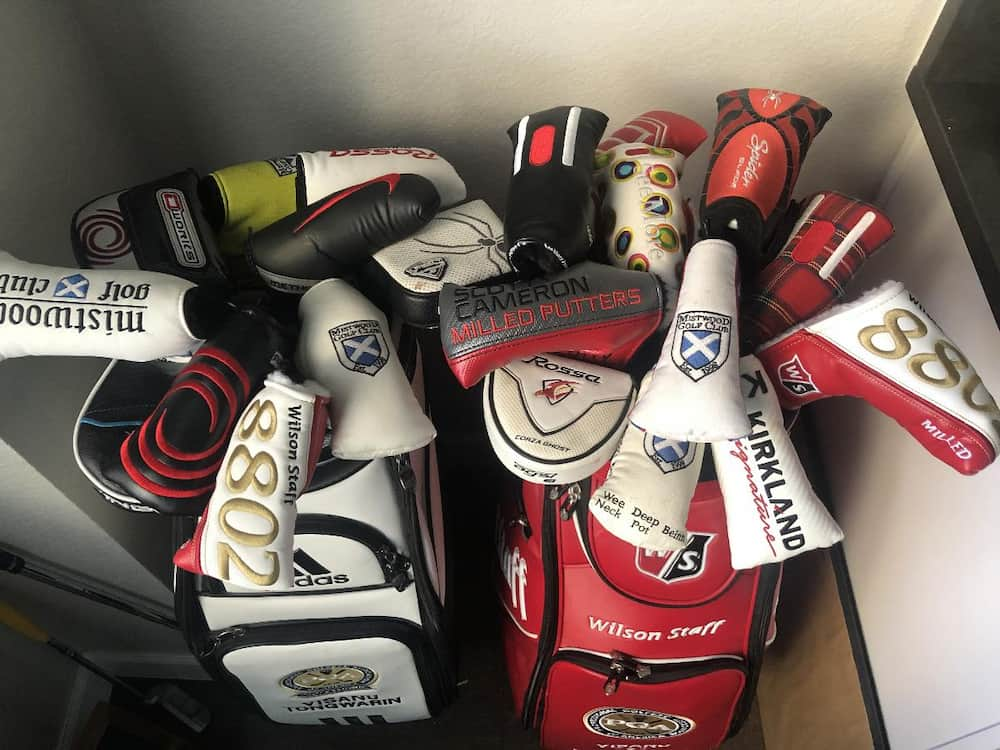We all know that putting is the most important club in our bag but for some reason we are always on the driving range with our other 13 clubs. Hopefully learning more about putting, putters and ways you can become a better putter will get you on the putting green more than ever!
There are basically two types of putters: blades and mallets. After choosing one of these, we have to determine if your putter is a toe-hang putter or a face-balanced putter.
Blade Putter
More of a head that is more narrow and lighter. This type is simpler in design with a traditional look. Weights are usually on the ends for balance but heavier on the toe side because the shaft is connected more closer to the heel side. That’s why the sweet spot looks closer to the heel of the blade. These putters usually require an arc-stroke.
Mallett Putter
More is a larger, wider and heavier clubhead. The face is pretty heavy but the back is extended to stabilize the putter. This type can be more forgiving on the sweet spot of the face because of the weight around the perimeter of the head. They also usually have a better alignment visual with the wider head.
Arc Stroke – Blade or mallet putter toe hang
Straight back and forth Stroke – Mallet face balanced (rare for blade)
Toe hang or Face balanced putter?
A putter can be determined by placing the putter shaft close to the head on your index finger. You want the putter to balance out on each side. You will then take a look at the putter head and see if the face of the putter is parallel to the ground or is slanted where the toe of the head is hanging down. If it is parallel you have a face balanced putter. If the toe is hanging low, you have a toe hang putter.
Types of Putter Grips
There are so many grip choices on a putter that it’s all about feel and your personal choice. The grip on a putter can be determined by the width, the length, the shape, the material and the weight of it to counterbalance the putter head.
Width
The wider the grip usually means you won’t manipulate the putter as much during your stroke. There will be less feel when making contact and possibly make the putter head lighter. If you feel you use too much hands and wrists during your stroke, a wider grip would help you. Thinner grips are used more with better players for better feel when using a stroke with their shoulders. It also is a personal preference on how big your hands are.
Length
Some players like a longer grip in length up to 2.5 feet. Depending on where they place their hands on the club, it’s usually not your traditional grip.
Shape
Most putter grips are shaped in some type of cornered-oval shape but there are many shapes now to give many options on how it feels in a player’s hands. Most are flat on the front side but varies on the bottom side where it rests in your fingers and palms.
Material
There are usually two types of material making a putter grip, rubber and leather. It’s personal preference on how it feels but rubber can last longer but be better with moisture. Leather can feel softer but will not last as long depending on use and weather conditions.
Weight
Some putter grips are now heavier to help your stroke better with tempo and rhythm. The weight usually placed at the end of the grip is now above your hands. This increases the MOI (Moment of Inertia) which will create a more stable putting stroke for you. This usually helps a player that has a rigid tempo putting stroke.


